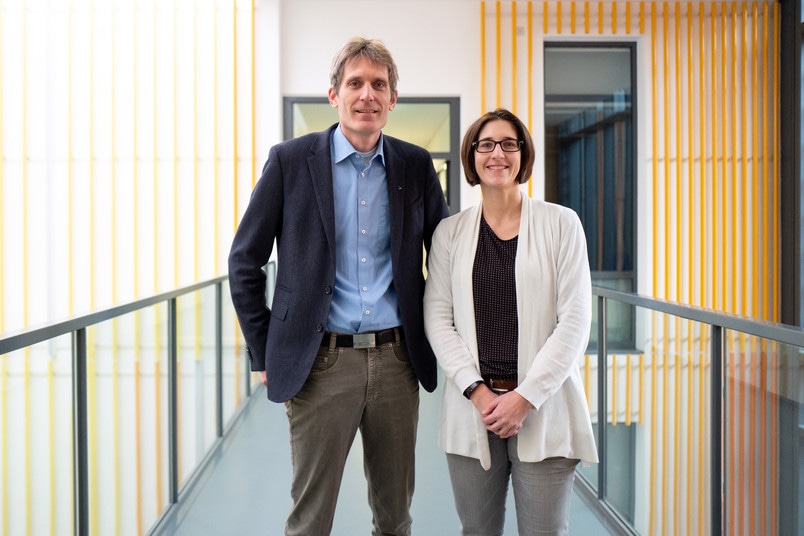Dec 5 2018
With the new system for producing aromatic nitrogen compounds, the manufacture of pesticides and medicines could be made more efficient.
 The team of Viktoria Däschlein-Gessner and Lukas Gooßen are working on optimizing various catalysts. (Image credit: RUB, Kramer)
The team of Viktoria Däschlein-Gessner and Lukas Gooßen are working on optimizing various catalysts. (Image credit: RUB, Kramer)
Scientists have developed a novel efficient catalyst to produce aromatic amines, which are vital building blocks in several pesticides and drugs. When compared to traditional catalysts, the system is more active; hence, lesser energy is required at the time of the reaction and complex compounds can also be synthesized. The teams headed by Professor Lukas Gooßen and Professor Viktoria Däschlein-Gessner, who collaborate at Ruhr-Universität Bochum as part of the Ruhr Explores Solvation cluster of excellence, have described the outcomes of their study in the journal Angewandte Chemie, published online in advance on November 19th, 2018.
Attached organic groups decisive
In order to synthesize aromatic amines—ring-shaped nitrogen-containing compounds—bonds must be formed between carbon and nitrogen atoms. The starting materials are primary or secondary amines, certain nitrogen compounds, and ring-shaped compounds, which initially do not include nitrogen and are known as aryl halides. The reaction can only be carried out with a palladium catalyst. The Bochum chemists were successful in considerably increasing the efficiency of the reaction by attaching organic groups—known as ligands—to the metal catalyst.
More efficient than conventional systems right from the start
With the newly developed ligand system, we have increased the activity of the palladium catalysts to such an extent that the reaction is faster and more efficient than with the systems optimized over many years.
Viktoria Däschlein-Gessner, Chair of Inorganic Chemistry II, Ruhr-Universität Bochum.
Research teams across the world are arduously working on the targeted design of such ligands. “However, the activity of the new developments rarely comes close to that of the catalysts that have been continuously optimized over decades,” added Däschlein-Gessner.
The newly developed system in Bochum instantly proved to be more active when compared to the systems used in industry. Chlorine-containing aromatic compounds can be coupled with various amines at room temperature within an hour using this new system. With current catalysts, this usually takes several hours and temperatures of 100 °C and more.
Even after many optimization rounds, the established catalysts in this area do not seem to have much room for improvement. However, our ligand system opens up new possibilities for increasing efficiency.
Lukas Gooßen, Chair of Organic Chemistry I, Ruhr-Universität Bochum.
Industry showing interest
The Chair of Inorganic Chemistry II, headed by Viktoria Däschlein-Gessner, and the Chair of Organic Chemistry I, headed by Lukas Gooßen are working together to optimize catalyst structures and check if it is possible to transfer the developed systems to other reaction types. An industrial partner has already come to know about the new system and is working on getting it ready for the market and using it on an industrial level.
The European Research Council supported the study within the framework of an ERC Starting Grant (YlideLigands 677749), the German Research Foundation within the framework of the RESOLV Cluster of Excellence (EXC1069).